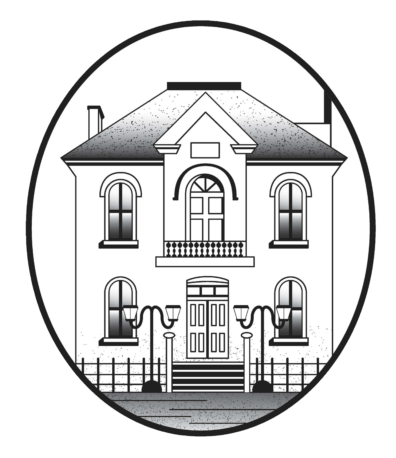Lessons Learned – Reflections on Four Years as OOECA President
OOE volunteers – and OOECA Board members – have remarkable competence, energy, dedication and collaborativeness. They participate to build our whole community, not to have “power,” advance their personal agendas or their own backyard issues. For example, all four past presidents of OOECA – including one who now lives in Sweden – continue to actively contribute to community initiatives.
You can successfully “fight city hall:” Initially it’s best to try to work with City staff. Indeed, overall, working collaboratively with a variety of parties results in the best options and decisions. Our city Councillor, David Chernushenko, was key to our making progress on a wide variety of issues and OOE probably took up a disproportionate amount of his time. The great majority of city staff are very competent and helpful. That said, the cancellation of the proposed parking lot on the Lees green space was a notable victory of the community and this most definitely required “fighting city hall.” And without the great efforts of city staff and Councillor Chernushenko, the complete design for Main Street would never have been so well-developed and approved. But some city staff were inflexible as per their refusal to underground of the electrical cables on Main Street, despite the fact the city was undergrounding of the Main Street electrical cables for the LRT system and the Regional and Domicile developments. I believe that there are a few influential city staff who value development more than they do the importance of community – this is regrettable.
Successful change usually depends on long-term community research and planning: For instance, the five-year investment of the community in the development of the community design plan (CDP) and Sustainable Living Ottawa East’s (SLOE) two-year “Deep Green” research were key to the Regional and Domicile developments proceeding in a manner supportive of the existing community.
Successful change also requires persistence: It took forever to have bike lanes created on Pretoria Bridge, safe pedestrian crossings at Clegg-Colonel By and at Isabella-Queen Elizabeth. And, obviously, it’s taking a long time to get the Clegg-Fifth Canal footbridge built and the Alta Vista Transportation Corridor (AVTC) killed – but tangible step-by-step progress moves you to the goal (e.g., the approved environmental assessment for the footbridge and its inclusion in the Transportation Master Plan; and the removal of the AVTC from the current schedule of “affordable roads”).
Strive for the best-possible rather than “perfection”: Ideally, the protected bike lanes on Main would have continued all the way from McIlraith Bridge to Echo/Colonel By, rather than ending at Harvey. But we couldn’t convince the city of this. This is not the end of the world: much better to have the protected lanes for 90 percent of Main than to not have them at all. And over the last four years there have been numerous projects that might have been better but, conversely might not have been completed at all if some “perfect” vision had been sought.
Seize opportunities to implement change: We’ve had fair amount of good luck / good timing to get positive changes implemented. For instance, the building of the nature trail through Springhurst Park and the Lees greenspace happened because the lead city engineer was willing to build a pathway that could double as the access to the re-built sewer line that ran beneath. Also, the rebuilding of Main coincided with the relatively new concept of “complete streets,” something the community was willing to embrace.
Need to overcome resistance to and fear of change: There is for some community members an innate inertia, resistance to change with a sentiment of “we like the community just as it is.” But, the reality is that change is coming – whether through large-scale development or infrastructure change like LRT – and the trick is to make these changes work for the community rather than being injurious. A primary example is the proposed footbridge. Some residents in the neighbourhood near the OOE end of the bridge are concerned about people parking then walking to Lansdowne. This will undoubtedly occur – including from time to time in front of my house – but it’s, to me, a small price to pay for a connection that will make it much easier to walk and bike across our communities. There were lots of people who thought the Corktown (uOttawa-Centretown) Footbridge would cause great disruption. But what really happened: we have a lovely bridge that is used by three times as many people as were estimated.
Ideas vs getting it done: Infrequently a resident would have a suggestion for “what should be done” but with the expectation that they could simply suggest and rely on us volunteers to research, consider and implement. The reality is that if you have an idea it’s up to you to work with the association, determine merits, convince others and be a key part of implementation. Also, in my view, the ideas really need to be of relatively broad application, not just of a couple of residents’ next-door interest.
Keep on learning and extend the network: Take advantage of knowledge-building opportunities e.g., City’s planning primer. Participate in key consultations even if they don’t directly apply to OOE. Build partnerships and relationships within and beyond the community. The combination of OOECA, CAG, the Mainstreeter, Sandy Hill Community Health Centre, community churches and others is so important. No one organization “can do it all.”
Importance of friends: Although I’ve lived in OOE for 35 years and, before becoming an active community association member knew lots of people, I am so delighted to have become friends of many more through Board participation. The community association has a remarkable diversity of people with a variety of political and personal views but a common and cooperative desire to make our piece of Rideau Island even more liveable.
